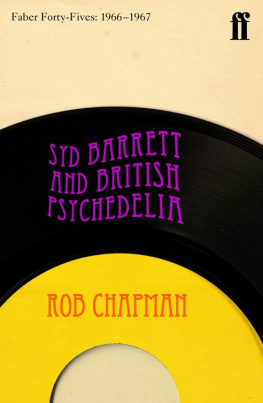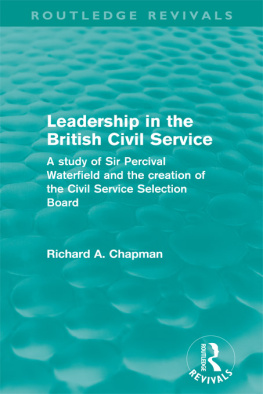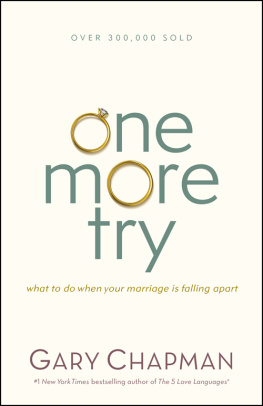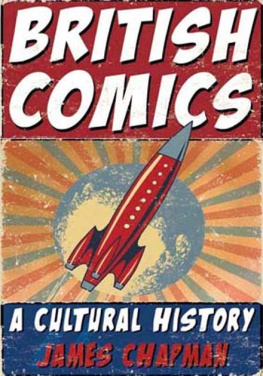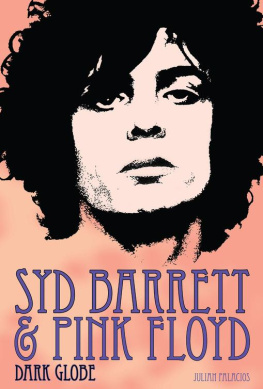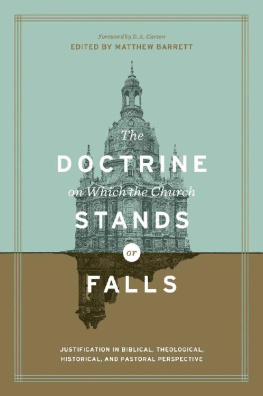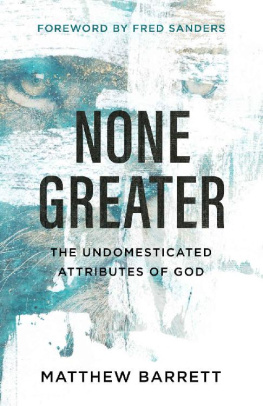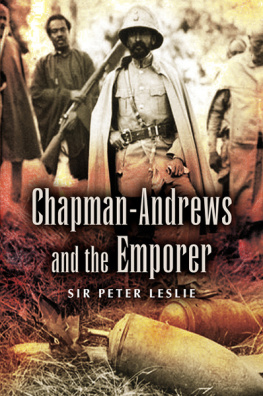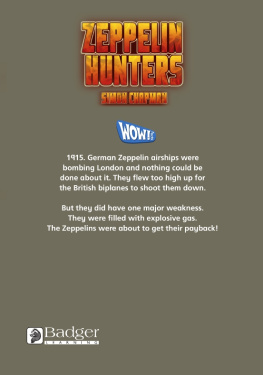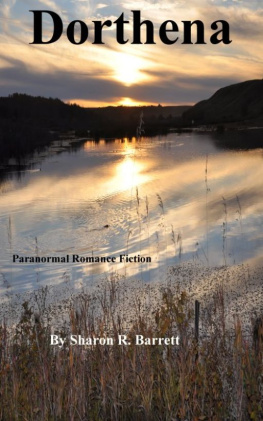Rob Chapman - Syd Barrett and British Psychedelia
Here you can read online Rob Chapman - Syd Barrett and British Psychedelia full text of the book (entire story) in english for free. Download pdf and epub, get meaning, cover and reviews about this ebook. year: 2012, publisher: Faber & Faber, genre: Religion. Description of the work, (preface) as well as reviews are available. Best literature library LitArk.com created for fans of good reading and offers a wide selection of genres:
Romance novel
Science fiction
Adventure
Detective
Science
History
Home and family
Prose
Art
Politics
Computer
Non-fiction
Religion
Business
Children
Humor
Choose a favorite category and find really read worthwhile books. Enjoy immersion in the world of imagination, feel the emotions of the characters or learn something new for yourself, make an fascinating discovery.
- Book:Syd Barrett and British Psychedelia
- Author:
- Publisher:Faber & Faber
- Genre:
- Year:2012
- Rating:4 / 5
- Favourites:Add to favourites
- Your mark:
- 80
- 1
- 2
- 3
- 4
- 5
Syd Barrett and British Psychedelia: summary, description and annotation
We offer to read an annotation, description, summary or preface (depends on what the author of the book "Syd Barrett and British Psychedelia" wrote himself). If you haven't found the necessary information about the book — write in the comments, we will try to find it.
Syd Barrett and British Psychedelia — read online for free the complete book (whole text) full work
Below is the text of the book, divided by pages. System saving the place of the last page read, allows you to conveniently read the book "Syd Barrett and British Psychedelia" online for free, without having to search again every time where you left off. Put a bookmark, and you can go to the page where you finished reading at any time.
Font size:
Interval:
Bookmark:
Faber Forty-Fives is a series of six short ebooks that between them tell the story of British pop music from the birth of psychedelia in the late sixties, through electric folk, glam, seventies rock and punk, to the eclecticism of post-punk in the late seventies and early eighties. Each book is drawn from a larger work on Fabers acclaimed music list.
Syd Barrett and British Psychedelia is an intimate snapshot of the years 19667, when the undergrounds house band, Pink Floyd, were cast blinking into the light of mainstream success. Nurtured in the progressive Cambridge scene and the bohemian hangouts of the Notting Hill Free School and UFO club, Pink Floyd pioneered a distinctly British mix of Victoriana, LSD-inflected mysticism, the avant-garde and pop. And at their heart was the gifted and complex songwriter, singer and guitarist Syd Barrett, who personified the psychedelic revolution in both its exoticism and its tragic impermanence.
Rob Chapman, Syd Barrett and British Psychedelia from Syd Barrett: A Very Irregular Head
Click here to buy
Rob Young, Fairport Convention and Electric Folk from Electric Eden: Unearthing Britains Visionary Music
Click here to buy
Michael Bracewell, Roxy Music and Art-Rock Glamour from Roxy: The Band That Invented an Era
Click here to buy
Nick Kent, The New Music Journalism from Apathy for the Devil
Click here to buy
Jon Savage, Sex Pistols and Punk from Englands Dreaming: Sex Pistols and Punk Rock
Click here to buy
Simon Reynolds, UK Post-Punk from Rip It Up and Start Again: Post-Punk 19781984
Click here to buy
One
As if in a dream he found himself, somehow, seated in the drivers seat: as if in adream, he pulled the lever and swung the car round the yard and out through thearchway, and as if in a dream, all sense of right and wrong, all fear of obviousconsequences, seemed temporarily suspended He chanted as he flew, and thecar responded with sonorous drone, the miles were eaten up under him as he spedhe knew not whither, fulfilling his instincts, living his hour, reckless of what mightcome to him.
THE WIND IN THE WILLOWS KENNETH GRAHAME
At the beginning of 1966 the English underground was still an amorphous collection of creative tendencies and unrealised possibilities. Ideologically, the counter-culture continued to be informed, on the one hand by various flavourings of old and new left politics that had grown out of the CND movement, and on the other by a distinctly apolitical or anti-political strand of radicalism based on an increasing disenchantment with parliamentary democracy and its attendant institutions. Musically the underground was still marching to the tune of CND. Jazz (in both its trad and modernist guises) and folk (revered for its authenticity and the militancy of its protest wing) remained the music of choice for those who had walked to Aldermaston.
Pop music came late to the party and in 1966 it was still referred to as pop music; the demarcation between pop groups and rock bands had not yet emerged. The Beatles were referred to as a pop group, and pop singles were the dominant currency. It is important to remember this when analysing the evolution of the English counter-culture. The underground was not spawned by the rock culture of the late 1960s if anything the opposite is true. The term underground was not even associated with music until 1967. Before then the term, in Britain at least, was chiefly applied to the film-makers who were influenced by the New York underground cinema of the early 1960s, and to the New Departure and Liverpool poets who had shed their beat influences or met them head on at the Wholly Communion poetry festival.
Much of this activity was going on completely outside the mainstream of British cultural life. What little attention it received tended to be either dismissive on the part of the arts establishment what Michael Horovitz called the stock-in-trade clichs and categories of literary urban sniping or sensationalist on the part of the tabloid press. More often than not the counter-culture was simply mocked, covered merely for its novelty value. This patronising tone pervaded even the most quasi-liberal arts coverage in the quality press. In the face of such universal dismissal or indifference the underground thrived, as undergrounds usually do.
Meanwhile the UK music industry went obliviously about its business, and its drinking, in Londons Soho. The old money and the trust-fund libertarianism that had floated Mary Quants first boutique and Britains first offshore pirate radio station, Radio Caroline, were in Chelsea, but by 1966 the counter-culture was gravitating towards W11, that geographic sprawl, rich in socio-political resonance that encompassed Notting Hill Gate, Ladbroke Grove and Westbourne Park.
In her book Borderlands/La Frontera, the feminist poet and fiction writer Gloria E. Anzalda memorably depicted the USMexico border as a place where the Third World grates against the First and bleeds. The same could be said of Londons W11 in the 1950s and early 1960s. W11, then as now, masked great diversities in circumstance, aspiration and wealth. The fragmented urban geography of the area reflected its social history. An inharmonious mix of grand Victorian mansion blocks and half-completed stucco terraces, the result of successive generations of speculation and bankruptcy, sat side by side with rat-infested tenements and dereliction. Inequality was always highly visible in the urban landscape of W11, and became more pronounced the further north you ventured. This remained the case even when London began to swing in the 1960s. At the Notting Hill end of Portobello Road tourists flocked to the antique stalls and shops. At the Goldhawk Road end the poor sifted through second-hand clothes on old wooden barrows and rag-and-bone merchants still plied their trade on horse and cart. It was at this end, the Ladbroke Grove end, where the cultural action would be in the latter half of the decade. This is where the English underground took root, and this, owing to a mixture of happenstance and cultural convergence, is where Pink Floyd would find themselves by the autumn of 1966.
At the beginning of the year they were mainly performing their repertoire of R&B and blues covers at private functions and parties. According to Nick Mason the group had no more than five or six original compositions in its set at this time; these presumably would have been Lets Roll Another One, Lucy Leave, Butterfly, Remember Me and Walk With Me Sydney. By the end of 1966 Pink Floyd would be the undergrounds house band. At the beginning of the year they were occasionally billed as The Pink Floyd Sound. By the end of the year they would have one.
W11 was as far removed from the ambience and architecture of Cambridge as it was possible to get, a perfect example of what the Chicago School of Urban Sociologists called a zone of transition. Dickens had called the area a plague spot, scarcely equalled for insalubrity by any other in London. The Times had called the area a social dustbin and a square mile of squalor. The Kensington Post dubbed it Rotting Hill. The black underground paper Hustler called it a transit area for vagrants, gypsies, and casual workers.
This was where many of the Empire Windrush migrants headed from 1948 onwards, in many cases exchanging one shanty-town for another. This was where the mass murderer John Reginald Christie lived and carried out his crimes during the same period, promising back-street abortions to the desperate and dispossessed, knowing that most of them would not be traceable or even missed in this square mile of flotsam and flux. This was where Peter Rachman did most of his business, a slum landlord so notorious for his ruthless and exploitative methods that he gave his name to an -ism. Rachmanism continued to thrive long after the man himself died in 1962. This was where the Fascist leader Oswald Mosley enjoyed his last hurrah, exploiting the racial tensions that existed in the area and which spilled over into full-scale racially motivated riots during the summer of 1958.
Font size:
Interval:
Bookmark:
Similar books «Syd Barrett and British Psychedelia»
Look at similar books to Syd Barrett and British Psychedelia. We have selected literature similar in name and meaning in the hope of providing readers with more options to find new, interesting, not yet read works.
Discussion, reviews of the book Syd Barrett and British Psychedelia and just readers' own opinions. Leave your comments, write what you think about the work, its meaning or the main characters. Specify what exactly you liked and what you didn't like, and why you think so.

